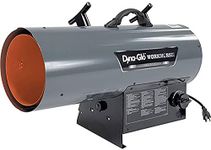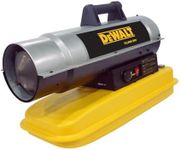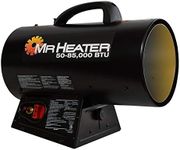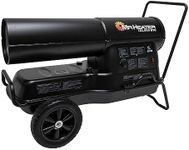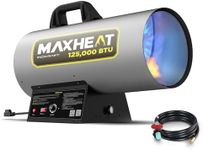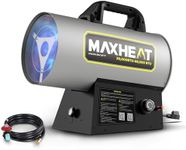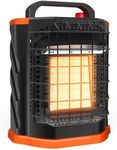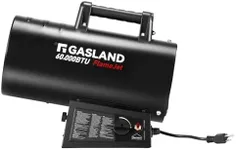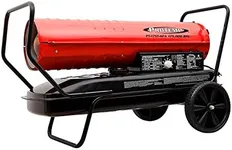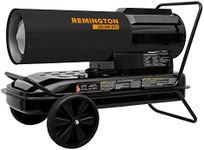Buying Guide for the Best Forced Air Kerosene Heaters
Forced-air kerosene heaters are a great solution for providing heat in large, open spaces such as garages, workshops, or construction sites. When choosing the right model for your needs, it's important to consider several key specifications to ensure you get the best performance and efficiency. Understanding these specs will help you make an informed decision and select a heater that meets your specific requirements.BTU RatingBTU stands for British Thermal Unit and measures the amount of heat a heater can produce. This spec is crucial because it determines how effectively the heater can warm up a space. Heaters with a lower BTU rating (e.g., 30,000-50,000 BTUs) are suitable for smaller areas, while those with higher ratings (e.g., 100,000-200,000 BTUs) are better for larger spaces. To pick the right one, consider the size of the area you need to heat and choose a BTU rating that matches your heating requirements.
Fuel Tank CapacityThe fuel tank capacity indicates how much kerosene the heater can hold. This is important because it affects how long the heater can run before needing a refill. Smaller tanks (e.g., 2-5 gallons) will require more frequent refills, while larger tanks (e.g., 10-15 gallons) allow for longer continuous operation. If you need a heater for extended use without frequent interruptions, opt for a model with a larger fuel tank.
Heating Area CoverageThis spec tells you the maximum area the heater can effectively warm up, usually measured in square feet. It's important to match the heater's coverage to the size of the space you need to heat. For small to medium-sized areas (e.g., 500-1,000 sq. ft.), a heater with lower coverage is sufficient. For larger spaces (e.g., 2,000-4,000 sq. ft.), you'll need a heater with higher coverage. Assess the size of your space and choose a heater that can adequately cover it.
PortabilityPortability refers to how easy it is to move the heater around. This is important if you need to use the heater in different locations or if you need to store it when not in use. Features like wheels, handles, and overall weight contribute to portability. If you plan to move the heater frequently, look for a model with convenient portability features.
Safety FeaturesSafety features are critical for ensuring safe operation of the heater. Common safety features include automatic shut-off, tip-over protection, and overheat protection. These features help prevent accidents and ensure the heater operates safely. When choosing a heater, prioritize models with robust safety features, especially if you plan to use it in environments where safety is a concern.
Noise LevelThe noise level of a heater can impact your comfort, especially if you plan to use it in a workspace or living area. Some heaters are designed to operate more quietly than others. If noise is a concern for you, look for models that are specifically marketed as quiet or have noise ratings available. Consider where you will be using the heater and how important a quiet operation is for your needs.
Ignition TypeIgnition type refers to how the heater is started. Common types include manual ignition, electric ignition, and battery-powered ignition. Electric and battery-powered ignitions are generally easier and more convenient to use compared to manual ignition. If ease of use is important to you, opt for a model with electric or battery-powered ignition.


